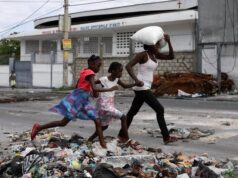Expert : Artificial intelligence may be used for biodiversity conservation in Arctic

Russia studies populations of polar bears and other animals, including with the help of drones
Artificial intelligence technologies (AI) may be helpful in studies aimed at conservation of biodiversity in the Arctic. AI may count rare species and pick images from drones, the Russian Ministry of Natural Resources and Environment’s representative Olga Krever said on side-lines of the St. Petersburg International Economic Forum (SPIEF).
“We hope a lot <…> for the development of artificial intelligence, which later on will help our experts not to waste hours, and will help us to calculate results of studies, just because it will leave aside useless or incorrect images. We have big plans [for these technologies]. In addition, it will be used to identify not only the species, but also the individual. This also requires training, and in this aspect future is also promising,” she said.
Russia studies populations of polar bears and other animals, including with the help of drones. This is a unique technology, the expert stressed. Large aircraft-type drones, such as Orlan, are helpful in counting large animals – polar bears or walruses. Smaller drones have been used for local tasks, like, for example, to count polar bear dens.
“Further to the Russian Arctic’s west, observation objects are also polar seagull and, of course, wild reindeer, because, for example, on the Taymyr Peninsula they are in catastrophic situations. It is of vital importance to follow up populations listed in the Russian Federation’s Red Data Book. These are key objects in the Arctic,” the expert said.
Biodiversity conservation
According to Rustam Romanenkov, Deputy Director General of the Arctic Initiatives Center, over recent 40 years, due to human activity, the numbers of animals and plants had dropped dramatically not only in the Arctic, but throughout the planet. “We now live in the era of several crises: the climate agenda, the loss of biodiversity. We even are not talking about just a decline, we really see losses, because the dynamics are very serious. If we take the period from 1970 to 2018, it is the time when experts found the largest number of species on the verge of extinction. That is, the population – 5,230 species – decreased on the planet by an average of 69%. Populations of freshwater ecosystem fauna decreased by 83%. The decline in the Latin American population was estimated at 94%. And 77% of the land, except for the Antarctica, and 87% of the world’s oceans have been affected directly by human activity,” he said.
Economic development in vulnerable ecosystems, like marine ecosystems, will always be associated with certain losses in biodiversity, Krever added. Therefore, experts must agree on the most important water areas to preserve biodiversity there.
“We must identify the most important for the biodiversity conservation biomes, marine areas, coastal areas, where marine mammals breed: seals, walruses, where polar bears shelter in harsh times, as without such areas they simply will not survive. <…> We must work on the country’s territory planning to be sure to avoid such territories to maintain the ecological balance and to preserve the most significant biodiversity hotspots,” the expert told the forum.
Further development
Romanenkov told TASS that the enlargement of the Northern Sea Route (NSR) is among the country’s priorities. NSR’s development includes building of both an icebreaker fleet and infrastructures. The number of vessels sailing along NSR will increase significantly, the navigation will become year-round, the route will have new hubs – and all this will certainly affect the Arctic inhabitants.
“The thing is what those technologies will be like, how “green” and non-speculative they will be. We need to use an eco-system approach. Any project we implement in the Arctic must be ecological. We must not limit ourselves to a formal environmental assessment, because it anyway is about key aspects. Any project must be viewed in the eco-system approach to analyze absolutely all key aspects: expositions of flora and fauna, climate, wind loads, water areas, expositions of indigenous peoples who live there, of camps, and of water resources,” the expert said.
According to him, this task will require efforts jointly with businesses that have financial capabilities, with resources of fundamental sciences, as well as of federal and regional regulators.
The 26th St. Petersburg International Economic Forum (SPIEF) is Russia’s showcase annual economic and business event. It was held on June 14-17. The theme in 2023 was: “Sovereign Development as the Basis of a Just World: Joining Forces for Future Generations.” TASS was the event’s official information partner.




